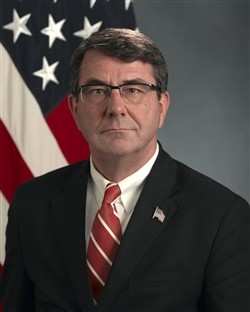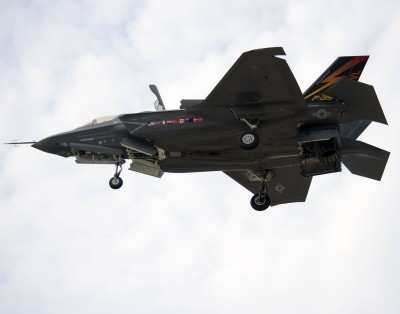JSF Program To Be Restructured, But On Track Pentagon Officials
Say
 Defense Secretary Robert M. Gates will recommend that President
Barack Obama nominate Navy Vice Adm. David J. Venlet, commander of
Naval Air Systems Command, to oversee restructuring of the F-35
Lightning II joint strike fighter program, a Defense Department
official told a congressional panel Wednesday.
Defense Secretary Robert M. Gates will recommend that President
Barack Obama nominate Navy Vice Adm. David J. Venlet, commander of
Naval Air Systems Command, to oversee restructuring of the F-35
Lightning II joint strike fighter program, a Defense Department
official told a congressional panel Wednesday.
Ashton B. Carter (pictured), undersecretary of defense for
acquisition, technology and logistics, announced Gates' choice of
Venlet as he described a five-point restructuring plan for the F-35
program to the House Armed Services Committee.
Gates announced last month that he would elevate the program's
oversight to the three-star level to reflect the importance of the
program to the future of military aviation. The F-35 is the first
aircraft to be developed to meet the needs of three services ...
the Air Force, Navy and Marine Corps ... and U.S. allies with
variants being developed simultaneously by prime contractor
Lockheed Martin. The F-35 is to replace the current F-15s, F-16s
and F-18s, resulting in cost-savings and economies of scale not
possible with maintaining separate aircraft.
Carter underscored the need to get the joint strike fighter on
track in light of delays and cost overruns. "The joint strike
fighter is our largest, most critically important program," he
said. "It's important to the three services and international
partners to know if restructuring has placed us on a realistic and
stable path."
The department initially ordered 2,443 of the jets, and eight
foreign militaries purchased an additional 730, Carter said. But
cost estimates have risen from $50 million per aircraft when the
program was introduced in 2001, to about $95 million, he said.

Gates added $450 million to improve the program, but a study by
Carter's office that began in November and was completed in January
showed that the production line at Lockheed Martin's Fort Worth,
Texas, plant still was taking too long and delaying flight testing
by at least two years. "It became clear in November of last year
that [the joint strike fighter] would breach Nunn-McCurdy," Carter
said, referring to a 1982 law that calls for termination of weapons
programs when costs grow by more than 25 percent above original
estimates. "This indicated to the department that we needed to take
a more forceful management stance," he said.
As part of the restructuring plan, the department will reduce
delays in the development and test schedule from 30 to 13 months by
purchasing additional aircraft to add to testing, borrowing three
operational test aircraft, and adding another software integration
line, Carter said.
Also, the department will withhold $14 million from the contract
"since it is not reasonable for the taxpayer to bear the full
burden," he said.
Additionally, the department will reduce the concurrency of the
development of the three variants, and will accept independent cost
estimates as a basis for the program, Carter said. "We believe this
restructuring puts the [program] on a realistic path toward
performance," he said.

J. Michael Gilmore, the department's director of operational
test and evaluation, testified with Carter and told the committee
he is concerned that the production stay on track to allow for
adequate joint testing. "My primary concern is that it be ready for
joint testing to begin in 2015," he said, with a completion date in
April 2016.
"It is less costly to discover problems early with a robust
developmental test program," Gilmore said. The restructuring plan
would ensure that adequate testing occurs, he added.
Despite the delays and cost overruns, Carter said, "no
fundamental technical problems have surfaced, nor have the
capabilities of the aircraft changed."
 ANN's Daily Aero-Term (05.01.24): Say Altitude
ANN's Daily Aero-Term (05.01.24): Say Altitude ANN's Daily Aero-Linx (05.01.24)
ANN's Daily Aero-Linx (05.01.24) Classic Aero-TV: Korean War Hero Twice Reborn
Classic Aero-TV: Korean War Hero Twice Reborn Airborne 04.29.24: EAA B-25 Rides, Textron 2024, G700 Deliveries
Airborne 04.29.24: EAA B-25 Rides, Textron 2024, G700 Deliveries Airborne Affordable Flyers 05.02.24: Bobby Bailey, SPRG Report Cards, Skydive!
Airborne Affordable Flyers 05.02.24: Bobby Bailey, SPRG Report Cards, Skydive!





